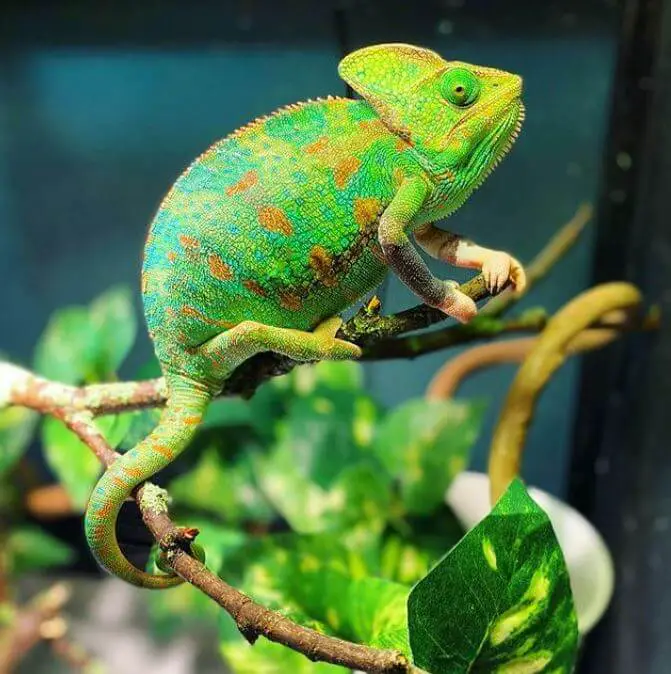How long do veiled chameleons live
How long do veiled chameleons live: Veiled chameleons, scientifically known as Chamaeleo calyptratus, are among the most captivating reptiles in the world. Their ability to change color, their unique physical characteristics, and their intriguing behavior make them a popular choice for reptile enthusiasts and pet owners alike. Native to the southwestern regions of Saudi Arabia and Yemen, these arboreal creatures have gained global recognition for their remarkable adaptation skills.
Veiled chameleons are renowned for their exceptional camouflage abilities. Their ability to change color allows them to blend seamlessly into their surroundings, making them masters of disguise.
From vibrant greens and blues to earthy browns and grays, these chameleons can metamorphose their appearance in response to various environmental stimuli such as temperature, light intensity, mood, or even communication with other chameleons. These fascinating reptiles possess unique physical attributes that set them apart from other species.
Veiled chameleons have a casque – a horn-like protrusion on top of their heads that resembles an ancient warrior’s helmet. This casque serves multiple purposes including thermal regulation, protection against predators, attracting mates through display behavior, and amplifying sound during vocalizations.
Brief Overview of Veiled Chameleons as Fascinating Reptiles
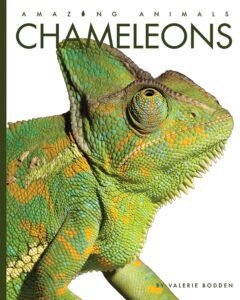 Their eyes are another remarkable feature that adds to the allure of veiled chameleons. Each eye is independently mobile and can rotate 180 degrees horizontally or vertically.
Their eyes are another remarkable feature that adds to the allure of veiled chameleons. Each eye is independently mobile and can rotate 180 degrees horizontally or vertically.
This extraordinary visual range gives them an incredible field of vision without the need for moving their heads. It enables them to scan their surroundings for potential prey or threats efficiently.
Apart from their physical attributes and color-changing abilities, veiled chameleons exhibit fascinating behavioral patterns that captivate observers worldwide. They are primarily arboreal, spending most of their lives in trees and bushes.
Their prehensile tail helps them maintain balance while climbing, and their zygodactylous feet, with fused toes forming a unique grasping mechanism, provide an excellent grip on branches. Veiled chameleons are also known for their hunting techniques.
They possess a remarkable projectile tongue that can extend rapidly to snatch unsuspecting insects from a distance. This specialized feeding mechanism sets them apart from other reptiles and has become an iconic characteristic of chameleons as a whole.
Importance of Understanding Their Lifespan for Pet Owners and Enthusiasts
For pet owners and reptile enthusiasts, understanding the lifespan of veiled chameleons is crucial for responsible care and long-term commitment. Properly caring for these captivating creatures means providing them with an environment that allows them to thrive throughout their lifespan.
By comprehending the average lifespan of veiled chameleons, which can vary depending on various factors discussed later in this article, pet owners can ensure that they provide adequate care to promote longevity and overall well-being. The lifespan of veiled chameleons also plays a significant role in making informed decisions about acquiring such pets.
Potential owners must be aware that these reptiles require specialized care due to their specific environmental needs, dietary requirements, and potential health issues. Understanding the expected lifespan allows individuals to assess whether they can make the necessary long-term commitment to meeting these requirements.
Furthermore, gaining knowledge about the average lifespan of veiled chameleons contributes to conservation efforts for this species in the wild. By understanding factors influencing their survival rates and longevity, scientists can develop strategies to protect natural habitats or implement captive breeding programs aimed at ensuring population sustainability.
General Lifespan of Veiled Chameleons
Understanding the general lifespan of veiled chameleons is essential for both those interested in these captivating reptiles and pet owners. In the wild, veiled chameleons typically live for about 5 to 7 years.
However, their lifespan can be influenced by various factors such as predators and habitat conditions. Veiled chameleons face numerous challenges in their natural habitats that impact their survival rate.
Predators, including birds, snakes, and larger reptiles, pose a constant threat to these small creatures. Moreover, competition for food sources and suitable mating partners can also limit their lifespans in the wild.
Another significant factor affecting veiled chameleon populations in the wild is the quality of their habitat. These reptiles are native to Yemen and Saudi Arabia, where they inhabit mountainous regions with a mix of trees and shrubs.
Deforestation and urbanization have resulted in habitat fragmentation, limiting their ability to find suitable resources for survival. Additionally, climate change impacts temperature conditions necessary for proper physiological functioning.
Average Lifespan in Captivity: 5-10+ years
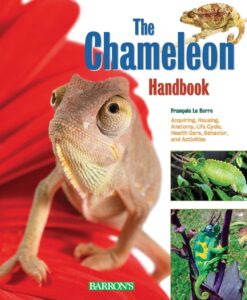 In contrast to their relatively shorter lifespan in the wild, veiled chameleons can thrive much longer when kept under optimal care in captivity. With proper husbandry practices and attention to specific needs, these charming creatures may live anywhere between 5 to over 10 years or even longer.
In contrast to their relatively shorter lifespan in the wild, veiled chameleons can thrive much longer when kept under optimal care in captivity. With proper husbandry practices and attention to specific needs, these charming creatures may live anywhere between 5 to over 10 years or even longer.
The key to increasing longevity lies not only in providing an appropriate environment but also meeting essential dietary requirements. Captive veiled chameleons are shielded from predators and have access to a consistent food supply, reducing potential risks commonly found in the wild.
Furthermore, maintaining stable environmental conditions such as temperature levels, humidity, and lighting is crucial in promoting the overall well-being and longevity of these reptiles. By recreating their natural habitat as closely as possible within a captive setting, veiled chameleons experience reduced stress levels and improved health.
Proper Care and Husbandry Practices to Enhance Longevity
Ensuring the long-term health and lifespan of veiled chameleons necessitates implementing proper care practices. Owners should be aware of the specific requirements these reptiles have in terms of housing, diet, hydration, and veterinary care.
A suitable enclosure for a veiled chameleon includes a spacious vivarium with plenty of climbing branches and foliage to mimic their natural habitat. Adequate ventilation is essential to maintain proper airflow within the enclosure.
Additionally, maintaining optimal temperature conditions between 75-85°F (24-29°C) during the day and slightly cooler at night provides the necessary thermoregulation for these reptiles. An insect-based diet forms the foundation of their nutrition in captivity.
Ensuring a variety of feeder insects such as crickets, mealworms, or roaches offers balanced nutrition to meet their dietary needs. It is important to properly gut-load these insects with nutritious supplements before feeding them to veiled chameleons.
Regular dusting or gut-loading with calcium supplements helps prevent metabolic bone disease which can significantly impact their lifespan. Regular veterinary check-ups are crucial for early detection of any health issues or parasites that may affect veiled chameleons’ longevity.
Fecal examinations are particularly important for detecting internal parasites that can cause severe harm if left untreated. Additionally, practicing good hygiene by regularly cleaning the enclosure and providing clean drinking water sources helps mitigate potential bacterial or fungal infections.
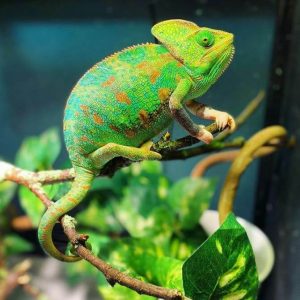
Factors Affecting Veiled Chameleon Lifespan
Genetics and Species Variation
Veiled chameleons, scientifically known as Chamaeleo calyptratus, encompass diverse subspecies with unique genetic traits and variations. These genetic differences can significantly impact their lifespan. One notable subspecies is the Yemen chameleon, which is renowned for its striking appearance and captivating behavior.
Compared to other subspecies, the Yemen chameleon tends to have a longer lifespan. While the average veiled chameleon in the wild lives for 5-7 years, Yemen chameleons have been documented to live up to 10 years or more in captivity.
Environmental Conditions and Habitat Quality
Creating an optimal environment for veiled chameleons is paramount in ensuring their longevity. Environmental conditions play a vital role in their overall health and lifespan. Maintaining appropriate temperature, humidity levels, lighting conditions, and ventilation are crucial considerations for their well-being.
Veiled chameleons require temperatures within a specific range of 70-85°F (21-29°C) during the day, with a slight drop at night. Humidity levels should be maintained between 50-70%, simulating their natural habitat.
Proper lighting is also essential for veiled chameleons’ survival as they rely on ultraviolet (UV) radiation exposure to produce vitamin D3 necessary for calcium absorption. Providing them with full-spectrum UVB lighting helps prevent metabolic bone disease—a common ailment affecting captive reptiles due to insufficient UVB exposure.
Furthermore, the size and quality of their enclosure directly impact their longevity. It is advised to provide veiled chameleons with spacious enclosures that mimic their natural habitat of trees and foliage-rich environments.
This allows them ample room for exercise while promoting mental stimulation through climbing and exploring opportunities. Including appropriate furnishings such as sturdy branches, artificial plants, and hiding spots further enhances their well-being.
How long do veiled chameleons live
Understanding the factors that influence veiled chameleon lifespan is crucial for responsible pet ownership and successful captive breeding programs. Genetics and species variation, as well as environmental conditions and habitat quality, are among the key aspects to consider.
By providing optimal living conditions that cater to their specific needs, including appropriate temperature, humidity levels, lighting, ventilation, and a stimulating enclosure with suitable furnishings, veiled chameleons can thrive and potentially exceed their average lifespan. However, it is important to note that individual care and attention are always required to ensure these captivating reptiles live a healthy and fulfilling life in captivity.
Diet and Nutrition for Longevity
Overview of Veiled Chameleon’s Dietary Needs
Veiled chameleons have specific dietary requirements that are crucial for their longevity and overall well-being. These captivating reptiles thrive on an insect-based diet that is rich in calcium, vitamins, and minerals.
In the wild, they feed on a wide range of insects such as crickets, mealworms, and roaches. However, when kept as pets, it is important to provide a varied and balanced diet to ensure optimal nutrition.
Insect Variety: A Feast for the Chameleon
Offering a diverse selection of feeder insects is essential to meet the nutritional needs of veiled chameleons. Crickets are commonly used as the primary food source due to their high protein content.
Mealworms can be offered occasionally but should not make up the main diet since they have a higher fat content. Roaches are an excellent alternative to crickets as they contain less chitin (exoskeleton) and provide ample protein without excessive fat.
Gut-loading: Enhancing Nutritional Value
To enhance the nutritional value of feeder insects, gut-loading is highly recommended. This process involves feeding nutritious foods such as dark leafy greens, carrots, and squash to the insects before offering them to your chameleon. By doing so, you ensure that your veiled chameleon receives a well-rounded diet packed with essential vitamins and minerals.
Calcium Supplementation: Preventing Metabolic Bone Disease
Veiled chameleons require an adequate supply of calcium to maintain healthy bones and prevent metabolic bone disease (MBD). MBD is a serious condition often caused by calcium deficiency or improper calcium-to-phosphorus ratio in their diet.
To mitigate this risk, dusting feeder insects with a calcium supplement is crucial. This helps compensate for any imbalances in the insects’ natural nutritional composition and ensures a proper calcium intake for your chameleon.
The Importance of Proper Hydration
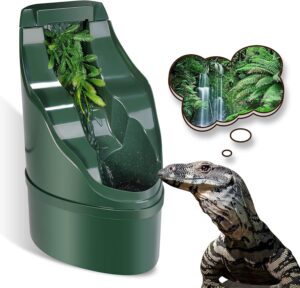 Maintaining proper hydration is vital for the health and longevity of veiled chameleons. In their natural habitats, they obtain moisture from dew and rainfall. As pet owners, it is essential to replicate this environment by providing regular misting sessions within their enclosure.
Maintaining proper hydration is vital for the health and longevity of veiled chameleons. In their natural habitats, they obtain moisture from dew and rainfall. As pet owners, it is essential to replicate this environment by providing regular misting sessions within their enclosure.
Misting not only helps maintain humidity levels but also allows chameleons to drink droplets of water from leaves or other surfaces. Additionally, having accessible drinking water sources within the enclosure, such as drippers or small water dishes, can provide an additional means of hydration for your veiled chameleon.
By ensuring a well-balanced diet consisting of various feeder insects rich in essential nutrients, practicing gut-loading techniques, supplementing with calcium to prevent MBD, and maintaining proper hydration through misting and providing drinking water sources, you significantly contribute to the longevity and overall health of your veiled chameleon. Remember that these reptiles have specific dietary needs that should be met consistently to ensure their well-being throughout their lives as captivating companions.
To sum up how long do veiled chameleons live
Taking proper care of a veiled chameleon involves a commitment to their health and well-being. By implementing regular veterinary check-ups, conducting fecal examinations, maintaining proper hygiene practices, and staying informed about potential vaccinations, you can significantly contribute to maximizing their lifespan.
Through these proactive measures, you provide your veiled chameleon with an environment that promotes their longevity while minimizing the risk of preventable health issues. With attentive care and dedication, your colorful companion can thrive for years to come, serving as a source of joy and wonder in your life
Further Reading:
- Best Turtle Substrate For Your Pet Tank
- Coconut substrate for chameleons
- Caught my Chameleon eating moss

